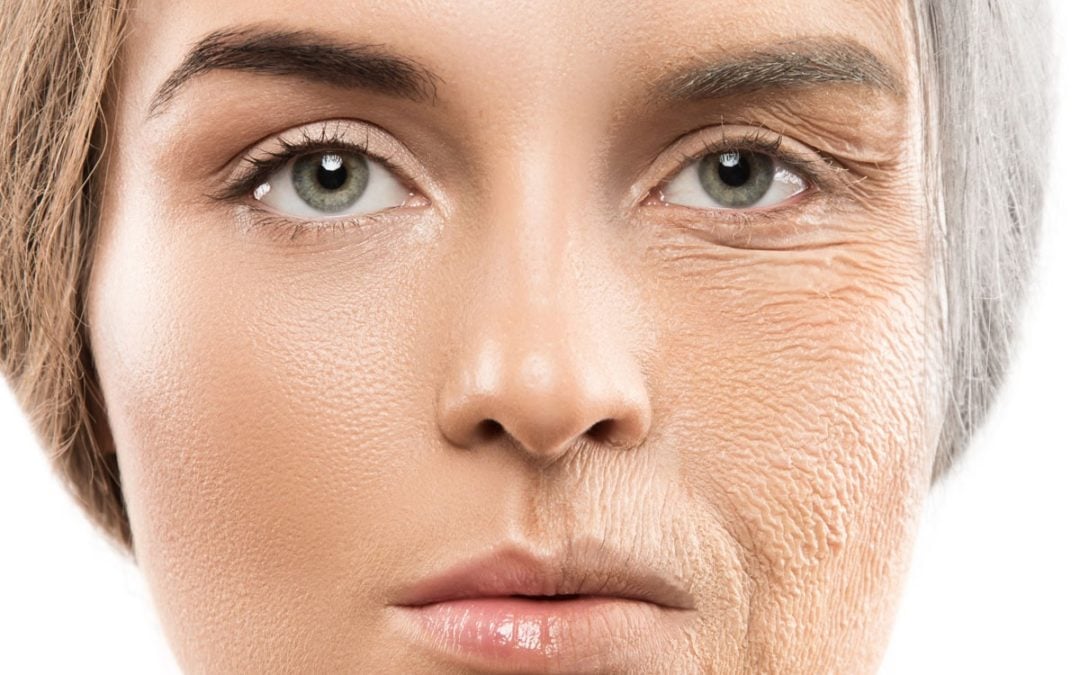
Understanding Skin Ageing: what happens when skin ages | Kosmoderma
Our skin is also the first organ to show signs of ailment when anything goes wrong with our body.
You must have noticed how your skin looks pale or unhealthy when you are not feeling well. And.
Like everything else, skin is also the first one to show signs of ageing if not taken care. So what
happens to it when we say that your skin has started showing signs of age? Let’s find out:
Skin’s structure
Skin by and large has six layers but what really matters to us are the three major layers. The top
layer, called the epidermis consists of dead cells with some clumped melanin – the pigment that
gives your skin some colour and some germinating cells at the base.
Below the epidermis is the dermis which is the central layer of the skin where you have a mesh of
collagen and elastin. Dermis is also where the hair roots, oil glands, sweat glands, and the capillaries that supply blood and take the toxins away, nerve endings and ground substance are located.
Underneath the dermis is the fatty tissue layer which has more blood vessels and a lot of fat that act
as cushion to your skin.
Young skin vs old
Look at a baby’s or a young person’s skin, it is round, plump, and soft, and when you touch it, the
skin bounces back. There’s spring to it. The skin feels supple and smooth. Funnily, a beautiful skin is
often compared to a baby’s bottom or cheeks, because that is soft, supple and has even skin tone.
Healthy young skin will have a smooth texture, and will look and feel hydrated. However, the reality
is that skin starts to age with your natural growth process. As you start to grow older the fat pockets
under your skin starts to get shrunk and face starts to get thinner.
For most people 20’s is when the skin looks and feels at its best. Teens would have been spent
dealing with acne and/or oily skin issues. It is in the 20’s that your skin stabilises and it has a natural clarity and suppleness. However, that changes as you cross your 30’s. The real aging process starts
then.
Underneath aging skin
So what really happens in this skin aging process? The first sign of skin aging is that it looks
dehydrated. There is pigmentation, dryness, and the pores look larger. You start to notice fine lines
and creases. The key sign is that your skin starts to look dull.
There is moisture loss along with uneven sebum production leading to dullness. Sebum, your skin’s
natural oil, gives it a glowing clarity. In the second phase the fat in the subcutaneous level starts to shrink. This impacts the bounce and suppleness of the collagen mesh that sits in the dermis. Elastin, the building block of skin also loses its elasticity.
Fine lines and wrinkles are signs that your collagen structure under the skin is collapsing. Weak
collagen and elastin means that your skin is no longer taut enough to bounce back naturally, and
needs external support to stay youthful.
As you move near your 40’s, the skin cells also stop absorbing moisture efficiently from the body and
environment. This causes the skin to look dehydrated and patchy. This is also the time when skin is
vulnerable to external pollutants and sun’s destructive rays. The dehydrated skin starts to look
pigmented and patchy due to uneven melanin production.
In the natural aging process, skin sagging takes place as you near your 50’s when skin loses all its
elasticity. It slackens so that your features start to droop. You notice sagging in the eye lids, mouth, jawline and neck.
Dealing with aging skin
While you cannot stop skin’s natural aging process, but you can definitely prolong its beauty with the
right care. Healthy skin habits like eating fresh fruits, drinking lots of water, avoiding cigarettes and excessive alcohol, and sun exposure keep skin clear and glowing. Along with that a regular skin care regime with cleanser, toner, and moisturiser go a long way in keeping skin young and supple.
But, the aforementioned can only work to an extent and they are usually more effective when used
for maintenance or as a side treatment. After a certain age, signs of aging become inevitable. For the
lucky ones, the signs come slowly but for most, fine lines, wrinkles and skin sags become very
evident. It is for these aging signs that people undergo injectable treatments, fillers or tissue
tightening treatments such as HiFu and Ultherapy.
Kosmoderma Skin, Hair & Lasers Clinics are dedicated to medical excellence in the field of Cosmetic Dermatology with international accreditation and facilities.
We offer scientifically proven treatments using US FDA approved technology. All our products have undergone extensive research and trials in USA, Europe and India. We pride ourselves in offering safe, effective and affordable treatments with high standards of quality. Kosmoderma gives personalized consults with skin care and uses facial analyzer and 3D imaging of the skin to analyze and personalize the treatments and skin regimen.



